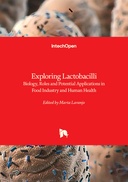Explore

Lactobacilli sensu latu are Gram-positive, fastidious, psychrophilic, non-spore forming, rod-shaped, non-motile, facultative anaerobic microorganisms. They can be found in diverse ecological niches, namely fermented foods and beverages, human gut, human urinary tract, and soil, among others. They are a group of lactic acid bacteria, formerly belonging to the genus Lactobacillus in the family Lactobacillaceae. A polyphasic approach led to the recent revision of their taxonomy, where 23 new genera were described besides Lactobacillus and Paralactobacillus based on whole genome sequencing. Moreover, the Lactobacillaceae and Leuconostocaceae families are part of one big Lactobacillaceae family. Their members can be either homofermentative or heterofermentative. Lactobacilli play two leading roles in the food industry as both starter cultures and probiotics. They produce bacteriocins and exopolysaccharides to improve food safety and control food spoilage. Regarding health benefits, some species of lactobacilli are known to improve cardiovascular diseases and lactose intolerance, prevent and treat cancer, regulate immunity, and improve gastrointestinal diseases. This book is a comprehensive review of lactobacilli, their biology, phylogeny, ecology, industrial applications, and benefits to human health.
This book is included in DOAB.
Why read this book? Have your say.
You must be logged in to comment.
